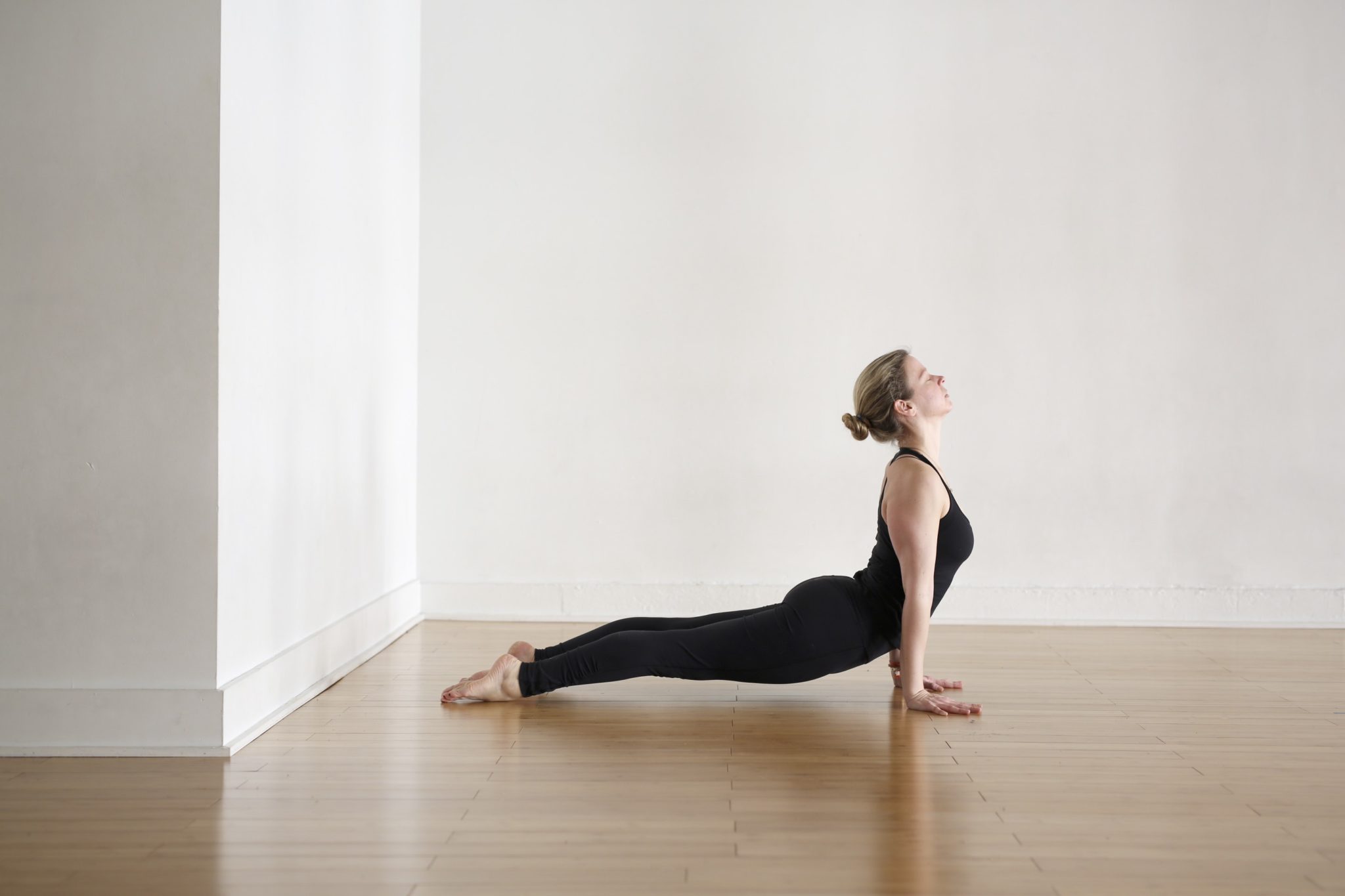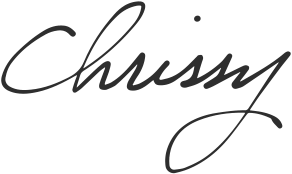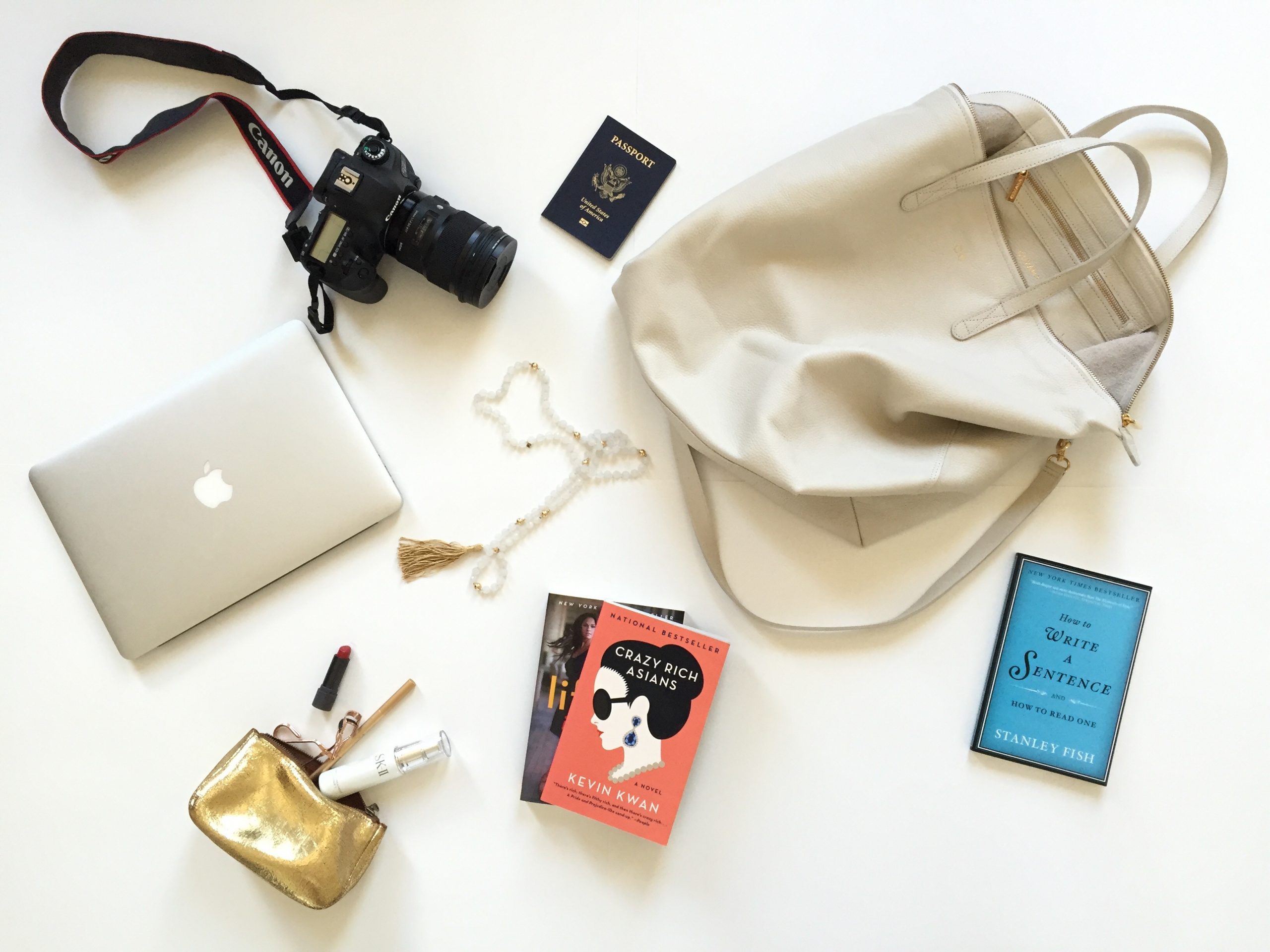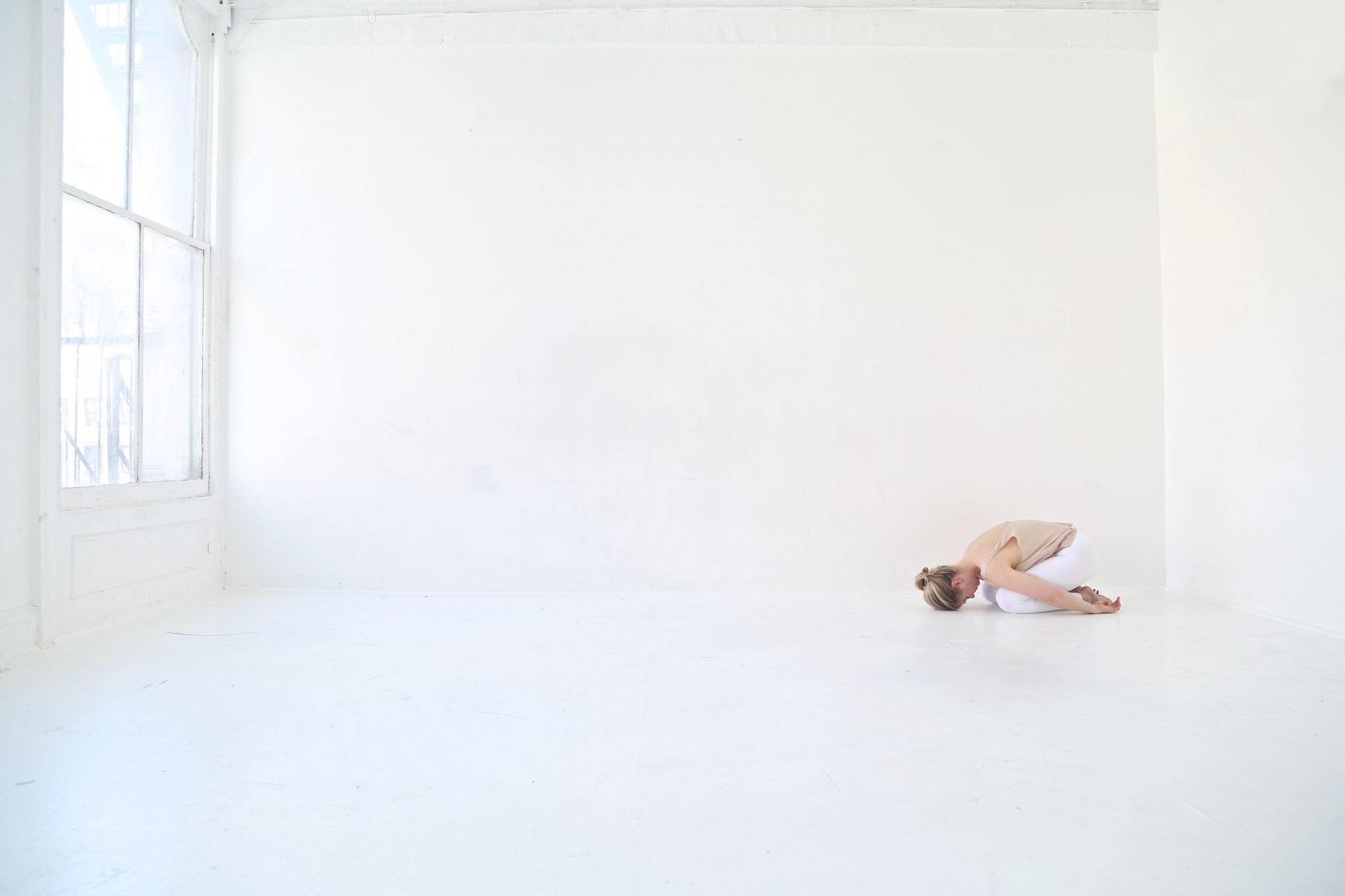Urdhva Mukha Svanasana (Upward-Facing Dog) is often misunderstood. Its placement in the traditional Surya Namaskara (Sun Salutation) sequence seems brilliantly strategic, offering what appears to be a well-deserved break after surviving Chaturanga. Flexible students take advantage of the hyper-mobility in their lumbar spines and shoulders by resting in their joints, whereas tighter students often strain their necks and shoulders as a way to compensate for stiffness in their upper backs, chests, and groins. Here are three preparatory poses that open and educate the component parts of Urdhva Mukha Svanasana.
Sphinx Pose with the Pelvis Elevated on Blankets
Place your pelvis on two folded blankets and prop yourself up on your forearms, making sure that they’re shoulder-width apart and parallel. Reach your sit bones towards the backs of your knees, allowing your sacrum to roll down the backs of your thighs. Observe how this action lifts the lower abdomen away from floor. Spin your innermost upper thighs towards the ceiling. Maintaining these oppositional forces, ground your forearms into the floor as if you were pulling the floor towards you. Spread across your chest by drawing your shoulder blades together. Press the inner borders of your shoulder blades forward towards the back ribs as you move the top of the upper arm bones towards the wall behind you. Send your front ribs in the direction of your spine and breathe.
Bridge Pose
Come to lie on your back. Grab the sides of your mat and roll your inner arms towards your outer arms. Ground your outer upper arms into floor and rebound the shoulder blades into chest. Lift your side ribs as you pin your outer shoulders into the floor. A block between the thighs is a great way to learn the action of internally rotating your thighs at your hip joints, an action that’s more challenging to find in Upward Dog.
Paschima Namaskarasana (Reverse Prayer) in Tadasana and Prasarita Padottanasana (Wide-legged forward bend)
Stand with your feet together in Tadasana. Stretch your arms out to the sides and roll the shoulders forward to internally rotate the upper arms. Bringing the palms to touch behind your back, gently begin to spread your collar bones from the sternum to the outermost edges of your shoulders. If you experience difficulty joining the palms, you can make fists with your hands or simply place your hands on your hips. The key is to focus on the broadening of the collar bones by concentrating on your shoulder blades moving both together and forward onto the back ribs. If that’s going well, you can go a layer deeper by thinking more about the inner borders of your scapulae moving into the chest, while the outer borders move towards the wall behind you.
To challenge these actions against the force of gravity, separate your feet wide apart and, maintaining the lift of your things, hinge forward at the hips into Prasarita Padottanasana. Think forward, not down. If it feels as if your upper back is pressing up into your hands, you’ve gone too far. Focus, instead, on moving the outer edge of your hands into your upper back.
Photo by Caitlin Casella.





Join the Discussion